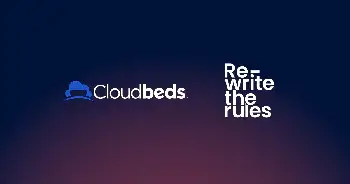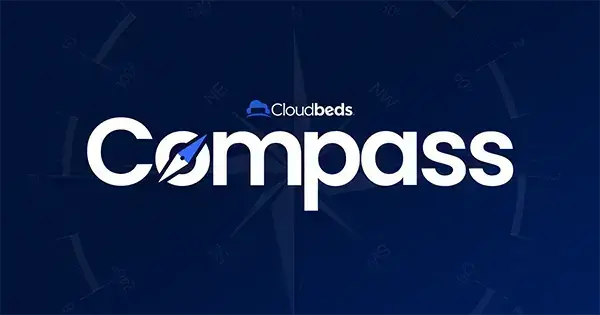
By Rafael Blanes
As with many other industries, the hotel industry has a unique set of data and performance metrics used to measure success. Whether you operate a hotel, vacation rental, hostel, or another type of property, it’s critical to understand the fundamental metrics used to evaluate the success of your lodging business.
The following is a list of hotel performance metrics and concepts every hotel owner and host should know to help run a successful business.
How do you measure hotel performance?
Hotel performance is typically evaluated numerically in the form of metrics such as a dollar figure (or other currency), percentage, or index. These metrics indicate how the hotel is performing in certain areas of the business and help guide property management, marketing, revenue tactics, pricing strategies, and more.
What is a KPI?
The most important metrics are called key performance metrics, or KPIs. A KPI is used to evaluate a hotel’s progress toward achieving a core business objective. Hotels can have overall KPIs and KPIs specific to a department, project, or campaign.
For example, an overall customer satisfaction KPI might be your traveler rating on Tripadvisor, and a KPI for the housekeeping department might be your cleanliness rating. Let’s say your current ratings are 4.0 and 3.9 out of 5.0, respectively. By setting objectives for these important KPIs over a certain time period – say, to reach 4.2 and 4.5 within six months –, you can rally your team around achieving them.
The difference between metrics and KPIs
Hoteliers use all sorts of metrics for evaluating overall performance, but the ones that are attached to specific goals are called KPIs. Sometimes in order to understand changes to a KPI, you’ll need to break performance down into smaller metrics.
For example, to understand how you’ll achieve guest experience KPIs of an overall rating of 4.5 on Tripadvisor, you’ll want to look at other Tripadvisor metrics like your ratings for service, rooms, value, and cleanliness.
Understanding hotel benchmarking metrics
Benchmarking is comparing your hotel’s performance to competitors, the local market, or the industry in general. This helps you understand your performance relative to others and identify areas that need improvement, as well as areas of strength.
For example, a rate shopping tool allows you to benchmark your room rates against those of competitors on an ongoing basis, optimize your pricing as needed to stay competitive in your market, and ensure you’re always positioned where you want to be.
Key performance metrics in the lodging industry
Now let’s look at some of the most important KPIs used by owners and operators in the hospitality industry.
1. Occupancy Rate
What is the occupancy rate?
A hotel’s occupancy rate is exactly as it sounds: the number of rooms occupied by guests. It can be measured on any given night or over a specific period of time such as a month or year. Occupancy is expressed as a percentage. Many hotels strive for 100% occupancy whenever possible, but sometimes it’s more profitable to sacrifice a few bookings for a higher average rate.
How do you calculate a hotel’s occupancy rate?
A hotel’s daily occupancy rate is calculated by dividing the number of rooms occupied that night by the total number of rooms in the hotel, then multiplying by 100 to get a percentage.
For example, if your hotel has 30 rooms and 8 were occupied last night, your occupancy rate was 8/30 x 100 = 27%. A pretty slow night!
Why is a hotel’s occupancy rate important?
A property’s occupancy rate is important because it indicates how successful it is at attracting bookings. Over time, it will show patterns that can be used to guide operational planning and sales, marketing, and revenue management strategies.
Returning to our previous example, if the 27% occupancy you ran last night is indicative of your year-round occupancy, you may need to find ways to reduce operating costs and boost room demand to increase revenue and profitability.
3 ways to improve occupancy
So how do you boost occupancy? By selling more rooms, of course. Here are a few ideas:
- Send an email or targeted social media ad to previous guests with an enticing offer to return, such as a special rate, room upgrade, or package.
- Contact your OTA market manager to inquire about participating in a promotion to increase your visibility and drive more bookings.
- Start a cost-per-click campaign on Google and include a special offer in the ad copy.
2. Average Daily Rate (ADR)
What is the average daily rate?
A hotel’s average daily rate is the average price guests pay for rooms. It can be measured on any given night or over a specific period of time such as a month or year. ADR is expressed as a dollar figure (or other local currency). Note that it does not take into account complimentary rooms or rooms occupied by employees.
How do you calculate a hotel’s average daily rate?
A hotel’s average daily rate is calculated by dividing the room revenue for that day by the number of rooms sold that day. For example, if your total room revenue last night was $2,425 and you sold 8 rooms, your ADR was $303.12. Not bad! But do your high rates explain why your occupancy was only 27%?
Why is a hotel’s average daily rate important?
A hotel’s ADR is important because it indicates the prices guests are willing to pay for your rooms on average. The more guests will pay for a room, the more potentially profitable it is, although that will also depend on your expenses.
3 ways to improve ADR
How can you improve your ADR? By charging more for your rooms. Here are a few ideas:
- Charge a premium for your best rooms, whether they’re larger, have a better view, or are in high demand for other reasons.
- Offer packages that bundle a room with other services such as breakfast, a welcome bottle of wine, or local activity.
- At check-in, offer guests the opportunity to upgrade to a higher category room at a special price.
3. Revenue Per Available Room (RevPAR)
What is revenue per available room?
Revenue per available room (RevPAR) is the average amount of room revenue generated per available room in a hotel property. It can be measured on any given night or over a specified period of time, such as a month or year. RevPAR is expressed as a dollar figure (or other local currency). Note that, unlike ADR, RevPAR takes into account all available rooms including both unoccupied and sold rooms.
How do you calculate a hotel’s RevPAR?
A hotel’s daily RevPAR is calculated by dividing the hotel’s total room revenue on that night by the total number of rooms available to sell – whether or not they were sold.
Going back to our earlier example, if you have 30 rooms and your total room revenue last night was $2,425, your RevPAR was $80.83. Could you have generated a higher RevPAR by lowering your rates slightly and selling more rooms? It’s an age-old question for accommodation operators.
Why is RevPAR important?
RevPAR is important because it takes into account a combination of occupancy, rate, and revenue for all available rooms in a hotel. The higher your RevPAR, the more successful you have been in finding the ideal balance between rates and bookings to drive the most hotel revenue.
3 ways to improve RevPAR
How can you boost RevPAR? By increasing occupancy, rate, or a combination of both. Here are a few ideas:
- Instead of static rates that rarely change, implement a dynamic pricing strategy, increasing rates during times of high demand and reducing rates during times of lower demand.
- Monitor your competitors’ rates and position your own rates plans strategically to attract more bookings at higher rates.
- Use stay restrictions on busy nights like “closed to arrival” or “minimum length of stay” to boost occupancy on shoulder nights.
4. Gross Operating Profit (GOP)
What is gross operating profit?
Gross operating profit measures a hotel’s total revenue less its operating costs. It provides a more holistic view of hotel performance because it takes into account all revenue streams and the costs of doing business in all departments, not just rooms. GOP is typically measured for a month or year.
How do you calculate a hotel’s GOP?
To calculate a hotel’s gross operating profit in a given month, add up its total revenue for that month and deduct total operating expenses. For example, if your property’s total revenue in November was $89,273 and you spent $78,211 in operating costs, your gross operating profit was $11,062.
Why is gross operating profit important?
Gross operating profit is important in hotel management because it shows whether a property is earning more revenue than it is spending (good) or vice versa (not so good). Although it’s a strong indicator of how profitable the property is, it doesn’t take into account non-operating expenses such as taxes, which are required to measure net income, or net profit – the true bottom line and arguably a hotel’s most important financial metric.
5. Gross Operating Profit Per Available Room (GOPPAR)
What is GOPPAR?
One of the limitations of RevPAR is it measures room revenue only without taking into account revenue from other departments or operating costs. For hotels that operate a restaurant, bar, and other revenue-generating outlets, gross operating profit per available room (GOPPAR) provides a more complete picture. It is typically measured for a month or year.
How do you calculate a hotel’s GOPPAR?
To calculate a hotel’s GOPPAR for a given month, take the gross operating profit for the month and divide it by the total number of available rooms. Returning to our example, if your GOP in November was $11,062 and you have 30 rooms, your GOPPAR was $368.73.
Why is GOPPAR important?
GOPPAR is important because it provides an indication of average performance by room. It helps you understand how well you are managing the combination of pricing, bookings, other revenue, and costs in order to achieve the highest potential profits for each room on your property.
6. Average Length of Stay (ALOS)
What is average length of stay?
A hotel’s average length of stay (ALOS) is the number of nights guests stay on average over a given period of time, typically a month or year.
How do you calculate a hotel’s average length of stay?
To calculate a hotel’s ALOS for a given month, divide the total occupied room nights during the month by the total number of bookings. For example, if your property had 243 occupied room nights in November and 107 bookings, your ALOS would be 2.3 nights.
Why is the average length of stay important?
Average length of stay is important because it tells you how many nights your guests tend to stay on average. In general, shorter stays are less profitable due to the higher costs of acquiring bookings and servicing rooms. Fewer bookings and less serving or rooms mean lower costs per room occupied. For this reason, many properties try to increase their guests’ average length of stay by providing incentives to stay longer, offering special services and amenities to attract long-stay guests, and implementing minimum length of stay requirements.
7. Market Penetration Index (MPI)
What is market penetration index?
Market penetration index (MPI), also known as occupancy index, is a measure of your hotel’s market share of occupancy relative to competitors. It is typically measured over a month or year. An MPI lower than 100 means you received less than your fair share of bookings; an MPI above 100 means you received more than your fair share of bookings.
How do you calculate a hotel’s market penetration index?
To calculate a hotel’s MPI for a given month, divide the hotel’s occupancy rate for that month by its competitive set’s aggregated occupancy rate and then multiply by 100.
For example, if your occupancy rate for November was 27% and your comp set’s was 54%, your rate MPI was 50. Not great! It means you’re receiving far fewer bookings than your competitors relative to the number of rooms you have. However, MPI is only part of the picture. To understand overall performance relative to your comp set, you need to also look at your rate and RevPAR indexes.
Why is MPI important?
MPI is important because it allows you to benchmark your property’s occupancy rate against competitors. You may think you’re performing well, but if your competitors are attracting more bookings you may need to reevaluate your hotel marketing, pricing, revenue, and online reviews strategies. Note also that since competitor performance data isn’t typically publicly available, you will need to subscribe to a data service like STR’s dSTAR report or AIRDNA’s Market Minder for vacation rental data.
More hotel metrics
Now that we’ve already seen the most common KPIs, there is another set of hotel industry metrics that you should consider to test your property’s health and help you drive your revenue strategy.
Average Room Rate (ARR)
What is the Average Room Rate?
While this is a similar metric to the Average Daily Rate, as the term points out, ADR only calculates your rates per day.
On the other hand, your Average Room Rate allows you to calculate them over a more extended and specific period of time (weekly, monthly, or yearly).
How do you calculate a hotel’s Average Room Rate?
To calculate the Average Room Rate, you must divide the total room revenue by the total of rooms occupied.
So let’s say that your total room revenue for June has been $25,000, and the total number of rooms occupied during that month was 55. Your ARR would be $454.
Why is ARR Important?
This metric is highly valuable in measuring how successful you were in a particular season and during a specific period against your competitors.
And it will aid you in steering your hotel marketing efforts by creating targeted promotional campaigns that can generate more traffic and incoming revenue.
ADR vs. ARR: What’s the difference?
It’s easy to get confused between these two metrics. Both calculate the rates of your rooms.
But one of the main differences is that ADR only factors in the room’s revenue on its own; it does not take into account other revenue sources associated with a room such as a spa service, restaurant, bottle service, etc.
Also, your ARR helps you track and analyze the revenue generated per room/suite for a specific period such as high season or low season months.
Revenue Generation Index (RGI)
What is revenue generation index?
The revenue generation index is another benchmarking metric that will come in handy since it measures your hotel business performance and occupancy rate with your competitors.
It gives you a better understanding of the revenue share you are receiving compared to your hotel compset.
This information will allow you to find ways to make your offers more attractive to guests and beat your local competitors.
How do you calculate a hotel’s RGI?
A note when calculating this metric, make sure to compare “apples to apples.”
Ensure that the compset you’re comparing yourself to has the exact same geographic location, size, star ratings, targeted market, room amenities, etc., to get a more accurate metric.
Below you can find the formula you need and the steps on how to calculate it:
Formula: RGI = Your RevPAR / Your competitors RevPar
Steps:
- You have to pick a specific time period
- Take the calculation you made of your RevPAR
- Calculate the market’s RevPar. You can do this using a performance intelligence engine with a rate shopper.
- Divide your hotel property RevPAR with that of your industry competitors
- Multiply the number by 100
Earnings before interest, taxes, depreciation, and amortization (EBITDA)
What is EBITDA in the hotel industry?
EBITDA stands for earnings before interests, taxes, depreciation, and amortization. It has recently become an important emerging KPI in the hotel industry.
This indicator can be tricky to understand, but in general, keep in mind that it evaluates your hotel’s operating performance.
How do you calculate a hotel’s EBITDA?
To apply your EBITDA formula, you need to go to your profit and loss statement.
First, take a look at the revenue incoming from your hotel operations; these would include rooms, F&B, and other services such as spa, events, lobby gift shop, etc.
The second step is to look at your operating expenses, including payroll, inventory, housekeeping (such as laundry and cleaning), maintenance, and other purchases.
Subtract your expenses (excluding interests, taxes, depreciation, and amortization) from your total revenue.
Why is EBITDA important?
There are two use cases for this key performance indicator:
- If you have a significant number of hotel assets and you are looking to ask for a loan from creditors, this is the typical metric that they will look at to see your profitability potential – once you remove accounting and finance variables – and the amount of money you have to pay interest.
- On the other hand, if you have hotel properties located in different countries, EBITDA is a great formula to compare your financial performance without considering the different tax rates in each country.
Net Revenue Per Available Room (NRevPAR)
What is NRevPar?
Net Revenue Per Available Room (NRevPAR) is a valuable performance metric to better understand how much revenue you’re receiving from your available rooms.
But unlike RevPar, it will calculate the net revenue and does not consider the costs associated with distributing your rooms on OTAs or other portals.
Typically you’ll use this metric along with other hotel revenue management KPIs to modify your pricing so you can increase your levels of occupancy.
How do you calculate a hotel’s NRevPar?
You can calculate your NRevPar formula simply by taking your total room revenue and subtracting your distribution costs, then dividing it by the total number of available rooms.
NRevPAR = (Room Revenue – Distribution Costs) / Number of Available Rooms
Revenue Per Occupied Room (RevPor)
If you want to evaluate your property’s overall performance in terms of how much revenue a room is bringing without considering seasonalities, this is a good hotel metric to use.
RevPor sets aside the total number of guests and instead measures on average how much a guest is spending on other products and services during their stay.
It will consider cross-selling in-room services such as dry cleaning, room service, mini bar, etc.
By taking out the volatile fluctuations of the rise and fall of your occupancy rates, this metric can give you a better idea of how much revenue your hotel business is gaining by selling ancillary services to the guests.
How do you calculate a hotel’s RevPOR?
You can calculate your RevPOR of a specific timeframe (daily, weekly, or annually) by dividing the total revenue by the number of occupied rooms.
RevPOR vs. RevPAR
Do not mistake RevPAR with RevPOR; these are two different key performance indicators that give you separate metrics, even though they sound very similar.
While RevPAR includes unoccupied rooms, RevPOR will not. But these two metrics can work side by side to increase your profit margins.
On the one hand, RevPAR will help you make strategic decisions about pricing and occupancy to increase your revenue per room, but RevPOR will allow seeing where you can earn additional income via cross-selling strategies.
Cost per Occupied Room (CPOR)
What is CPOR in hospitality?
CPOR or Cost per Occupied Room is an important metric that will help you keep track of your hotel expenses.
It is also a metric frequently used to help determine your minimum rate per room since you should charge guests enough to cover your costs and generate a profit margin.
Generally speaking, it will give you a good overview of your room profit after removing the operating costs and allow you to make more intelligent pricing and marketing decisions.
How do you calculate a hotel’s CPOR?
You can calculate your CPOR by dividing the gross operating expenses by the total number of rooms sold.
So, for example, if in June your total gross operating expenses were $8000 for your 10 rooms, then your CPOR would be $800.
Just a note, when you’re calculating your gross operating expenses, you can either consider only room-related costs to find the average variable expenses, or, if you’re using the metric to set your room rates, it’s advisable to include both fixed and variable costs to avoid any profit loss.
Total Revenue Per Available Room (TrevPAR)
TrevPar or Total Revenue Per Available Room is a performance metric that will help you see the overall revenue sources of your hotel property’s operation.
This metric lets you identify underperforming and outperforming sources of revenue and discloses revenue opportunities. Generally speaking, it will let you make better strategic decisions about your sales mix.
How do you calculate a hotel’s TrevPAR?
The TrevPAR formula is quite simple. You need to divide the total revenue by the total number of available rooms.
TRevPAR = Total revenue/Total available rooms
Just consider that while you’re calculating the TrevPAR formula, it won’t take into account occupancy or costs.
What is the difference between RevPAR and TrevPAR?
RevPAR and TrevPAR are metrics that can be confusing due to their similar names, but they measure two different things.
RevPAR, or revenue per available room, only looks at the revenue generated from the rooms sold, making it a more limited metric. TrevPAR or Total Revenue Per Available Room is a broader metric that will tell you other sales sources such as F&B, parking, spa and health services, events, and all the different sources of revenue generated by your hotel business.
Since TrevPAR covers the sources of your sales in-depth, it will give you a more accurate picture of your hotel business’s performance at any period of time.
Final thoughts
Having these metrics in mind and understanding what each of them evaluates will help you better assess your hotel’s profitability, make the best forecasting decisions, and drive more profit.



















